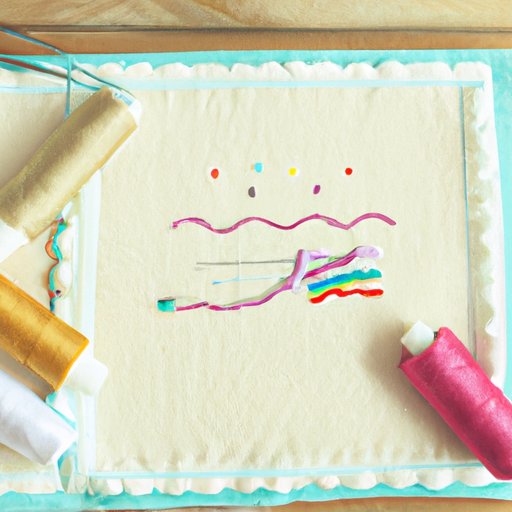Introduction
Embroidery is an ancient art form that has been practiced for centuries. It involves using decorative stitches to embellish fabric with colorful designs and patterns. Today, it is a popular craft used for making clothing, accessories, home décor, and more. Learning how to embroider can be a great way to express yourself and add unique touches to your projects. Plus, it can also be a relaxing hobby to help reduce stress and anxiety.
Beginner’s Guide to Embroidery
If you’re new to embroidery, there are some essential tools and materials you’ll need to get started. These include fabric, embroidery floss, needles, scissors, and an embroidery hoop. You may also want to invest in other items such as a thimble, marking pens, and a needle threader. Once you have all of your supplies, the next step is to select the right fabric and threads for your project.
When selecting fabric, consider the type of design you want to create. For example, if you’re making a pillowcase, you may want to choose a light-colored fabric that won’t show the stitches too much. On the other hand, if you’re making a wall hanging, you may want to go with a heavier fabric such as canvas or linen. As for the thread, you’ll want to pick colors that will complement the fabric and design.
Transferring Embroidery Patterns
Once you’ve selected the fabric and thread, the next step is to transfer the pattern onto the fabric. This can be done in several ways, including tracing, stamping, and ironing. Tracing is the most common method, as it allows you to accurately transfer even the smallest details. To do this, simply place the pattern on top of the fabric and trace around it with a marking pen or pencil. If you’re working with a large pattern, you may want to use carbon paper to make sure everything is transferred correctly.
Stamping is another popular method for transferring patterns. This involves using a rubber stamp to transfer the design onto the fabric. The advantage of this method is that it’s very quick and easy. However, it can be difficult to get the exact details of the pattern. Finally, you can also use an iron-on transfer to transfer the pattern. This is a good option if you’re working with a complex pattern, as it will ensure that all of the details are accurate.
Creating Professional Looking Embroidery
Once you’ve transferred the pattern onto the fabric, you’re ready to start stitching. To ensure that your embroidery looks professional, there are a few tips you should keep in mind. First, be sure to take your time and make sure each stitch is neat and even. This will ensure that your design looks polished and professional.
In addition, you should also pay attention to blocking and pressing techniques. Blocking is the process of stretching and shaping the fabric after stitching. This will help to ensure that the finished piece looks neat and even. Pressing is also important, as it helps to set the stitches and make them look more crisp and defined.
Machine Embroidery for Beginners
For those who are interested in trying machine embroidery, there are some things you should know before getting started. First, it’s important to familiarize yourself with the different types of machines available. Once you’ve chosen a machine, you’ll need to learn how to set it up properly and make sure all of the settings are correct. You’ll also need to purchase the necessary software, stabilizers, and threads.
Finally, it’s important to practice and experiment with different techniques. With time, you’ll become more comfortable with machine embroidery and learn how to create beautiful designs.
Embroidery Stitches for Beginners
Learning different embroidery stitches is a great way to add texture and depth to your designs. There are many different stitches used in embroidery, including the basic running stitch, back stitch, stem stitch, French knot, and more. For beginners, it’s best to start with the basics and work your way up to more complex stitches.
If you’re looking for tutorials, there are plenty of online resources available. You can find step-by-step instructions for different stitches, as well as videos and images to help you understand the process. With a bit of practice, you’ll soon be able to create beautiful embroidery designs with ease.
Conclusion
Embroidery is a fun and rewarding craft that anyone can learn. From selecting the right fabric and threads to mastering different stitches, there is a lot to learn when it comes to embroidery. With the right tools and materials, as well as some practice and patience, you’ll soon be creating beautiful projects with ease.
No matter what level you’re at, remember to enjoy the process and have fun! With time, you’ll develop your own style and learn how to create unique and beautiful pieces.
(Note: Is this article not meeting your expectations? Do you have knowledge or insights to share? Unlock new opportunities and expand your reach by joining our authors team. Click Registration to join us and share your expertise with our readers.)
